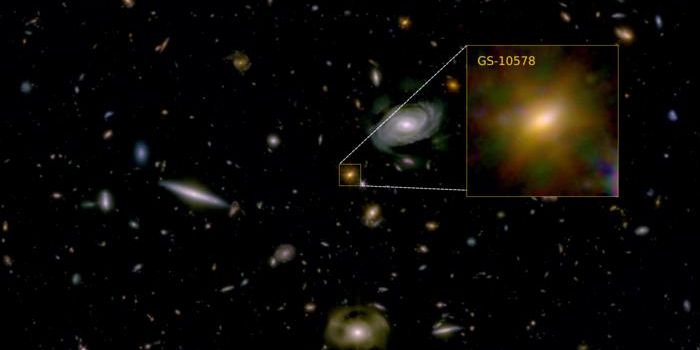In a Rare Event, Massive Star Disappears Without a Supernova
Astronomers were studying a massive star in the Kinman Dwarf Galaxy from 2001 to 2011. The galaxy is too far away to see individual stars there, but the signatures of some of them can be detected. It was thought to host what's known as a luminous blue variable star, which may be an astonishing 2.5 million times as bright as our sun. These unstable stars are known to undergo dramatic changes in their brightness and spectra. The research conducted on the star indicated that it was in a late stage of evolution.
Scientists became interested in how the lives of massive stars end, so they went back to study this blue variable in 2019. Using the European Southern Observatory's (ESO's) Very Large Telescope (VLT), they searched for it again, only to find that its signatures had disappeared.
"Instead, we were surprised to find out that the star had disappeared!" exclaimed graduate student Andrew Allan of Trinity College Dublin, Ireland, co-author of a study reporting the findings in Monthly Notices of the Royal Astronomical Society. "It would be highly unusual for such a massive star to disappear without producing a bright supernova explosion."
The researchers were unable to detect the signatures that would indicate the presence of the star using instruments called ESPRESSO, including the VLT's four 8-meter telescopes or an X-shooter instrument.
"We may have detected one of the most massive stars of the local universe going gently into the night," says study co-author Jose Groh, also of Trinity College Dublin. "Our discovery would not have been made without using the powerful ESO 8-meter telescopes, their unique instrumentation, and the prompt access to those capabilities following the recent agreement of Ireland to join ESO." Ireland joined ESO in September 2018.
The researchers began to look at data that was collected with an X-shooter and UVES instrument on the VLT in the Chilean Atacama Desert, and other telescopes."The ESO Science Archive Facility enabled us to find and use data of the same object obtained in 2002 and 2009," said study co-author Andrea Mehner, a staff astronomer at ESO in Chile. "The comparison of the 2002 high-resolution UVES spectra with our observations obtained in 2019 with ESO's newest high-resolution spectrograph ESPRESSO was especially revealing, from both an astronomical and an instrumentation point of view."
The study showed that the luminous blue variable in the Kinman Dwarf Galaxy may have gone through a strong outburst period around 2011. These types of stars tend to have giant outbursts during their lifetimes, when mass is lost rapidly and they become significantly more luminous.
The researchers suggested that the star disappeared without a supernova for one of two reasons: the star became less luminous and is partly hidden by dust, or, the star collapsed into a black hole but did not generate a supernova, a rare occurrence. It's been thought that most massive stars come to an end with a supernova.
Additional work will be needed to determine which explanation is correct. A telescope set to be deployed in 2025, the ESO's Extremely Large Telescope (ELT) may help provide an answer.
Sources: Science Daily via ESO, Monthly Notices of the Royal Astronomical Society








